Putting the YUM
in Museum

COLIN SIMPSON
Sichuan Cuisine Museum of Chengdu, China
THE Chinese province of Sichuan takes its distinctive style of cooking very seriously — so much so that it has set up a museum devoted to the subject.
The liberal use of red-hot chillis, mouth-numbing Sichuan pepper and fierce chilli bean paste gives many of the region’s dishes their fiery character.
Such intense flavors and the sight of meats, fish and vegetables lolling in red chilli-infused oil might be expected to put diners off, but in fact Sichuan cuisine is popular around the world. Chengdu has been given the rare accolade of being named a city of gastronomy by UNESCO.

Cook and food writer Fuchsia Dunlop, author of a number of books on Chinese cuisine, told me the stereotype that Sichuan cuisine is all about fiery heat is misleading.
“Actually its most striking characteristic is the diversity of flavours,” she said. “They say of Sichuanese food that ‘a hundred dishes have a hundred different flavours’ — and it’s this endless variety and dazzling complexity that is so beguiling.
“A good Sichuanese meal should include a balance of flavours, it’s not just about aggressive heat.”
A particular favourite is, of course, kung po chicken, a tasty stir-fry with peanuts, while other classics include pock-marked Mother Chen’s beancurd and man-and-wife meat slices. Sichuan is one of China’s so-called eight great cuisines – the others are Hunan, Cantonese, Fujian, Zhejiang, Anhui, Jiangsu, Shandong.
The exhibits at the Sichuan Cuisine Museum of Chengdu in Pixian county include plates of simulated food made to resemble some of these dishes. They are an odd and not entirely appetising sight alongside more conventional exhibits such as bowls, dishes, plates and spoons. The squeamish may not like the bowl of (real) cooked rabbit heads on the front desk.

The entire history of food and cooking in Sichuan is told, and some of the items are very old, including a large 2,000-year water container. One display suggests a reason for the spread of this style of cooking. During the Second World War many people moved to Sichuan and brought ingredients and cooking methods with them. These other styles were combined with Sichuan cuisine, and after the war the displaced people returned home – taking a taste for Sichuan food with them. Visitors can watch the real thing being prepared — and even cook it themselves — in a vast glass-walled kitchen. I donned a chef’s hat and rustled up a quick kung po chicken when I was there. It was a bit different from cooking a Chinese meal at home, though. I had used Dunlop’s classic Sichuan Cookery book for years before moving to China, and would characterise myself as a slow and steady cook, taking ages over the preparation and cooking. Here, the cooking of the small morsels of chicken and dried chillis in a spicy sauce, was over in a flash.
Outside the building stand rows of large containers with shiny red covers that are used to make chilli bean paste, often described as the soul of Sichuan cuisine. It can take as long as two years for the full flavour of this paste to emerge. Pixian county is famous for the quality of its chilli bean paste.
Families can rent plots in a nearby garden and harvest their own produce. Once they have planted their vegetables the museum gives them regular bulletins on how they are developing and advises them when they should come back to collect their crop.
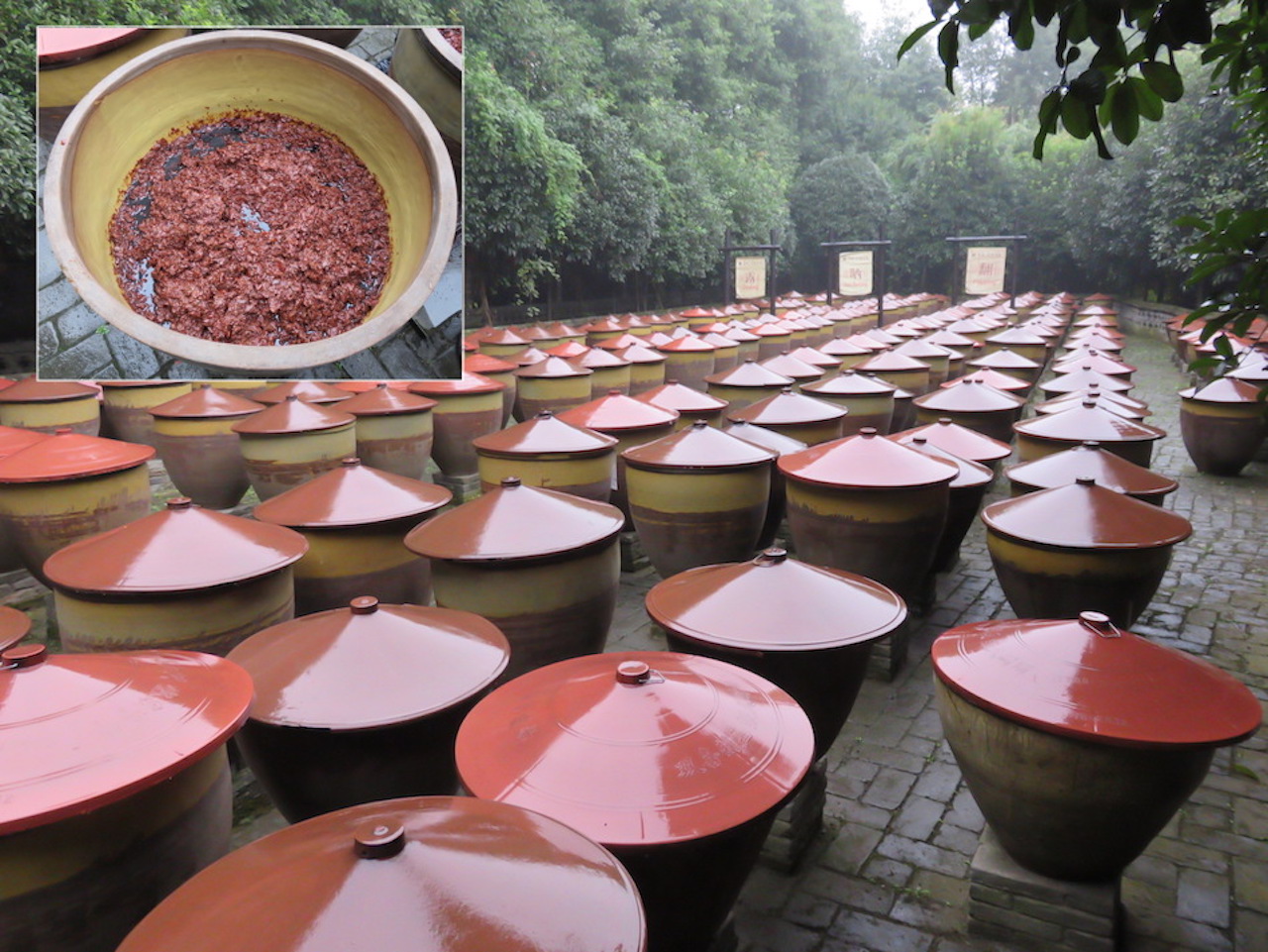
Sichuan cuisine is widely available across Chengdu, often served to groups on a glass turntable on a round table.
The feast may start with a few cold dishes, which are soon joined by hot meat courses, vegetables, soup, rice and a fish lying in a piquant sauce. A plate of cooling melon might round the meal off.
A variation is provided by the Sichuan hotpot, where diners cook pieces of raw meat and vegetables in bubbling sauces at the table.
Some restaurants lay on another traditional expression of local culture, Sichuan opera. The highlight usually involves the technique known as face-changing, where a performer switches his mask several times, looking fierce one moment and smiling the next.
The colorful masks change seemingly by magic, and a guest may be shaking the hand of the entertainer when the transformation happens without having a clue how the trick is achieved.
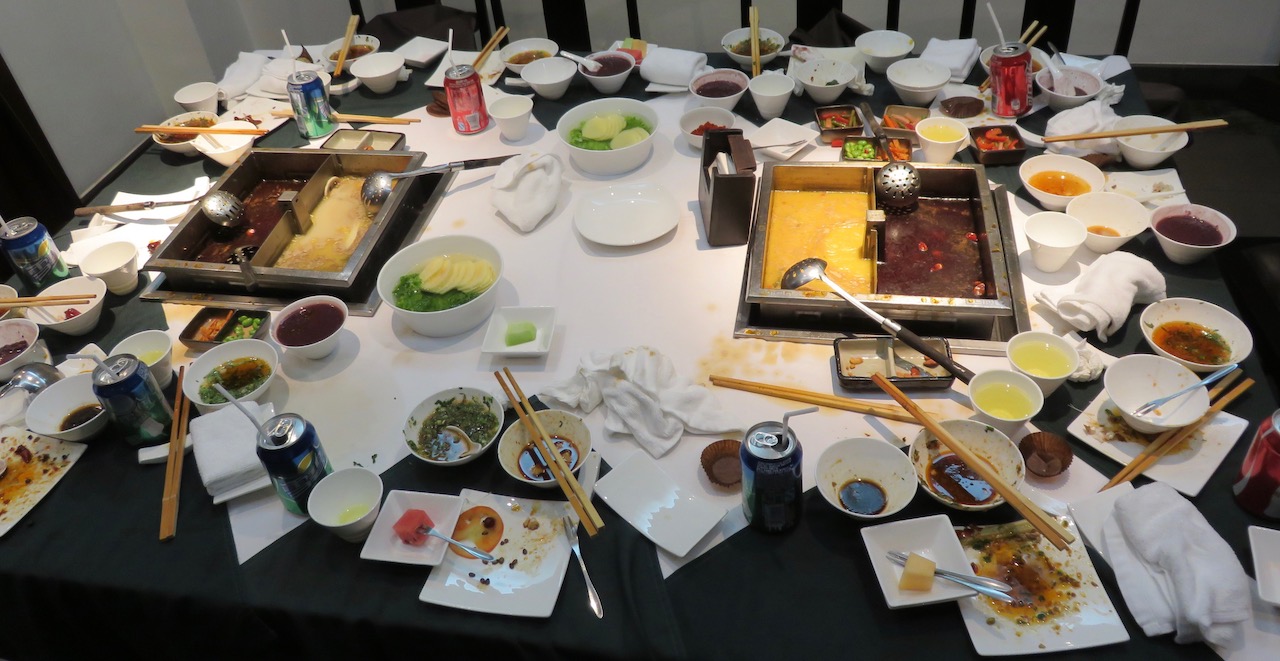
Verdict: Quirky museum that will appeal to fans of Sichuan food.
Updated June 2020
MORE INFO
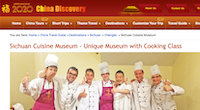 FURTHER INFORMATION about the museum can be found on the site of the China Discovery travel agency, which organises tours. READ MORE
FURTHER INFORMATION about the museum can be found on the site of the China Discovery travel agency, which organises tours. READ MORE
RELATED
 BUG, SCORPION STREET SNACKS: Starfish, larvae, bugs and seahorses were among the specialities on offer at Beijing’s Donghuamen Night Market. We recall this unusual market… READ MORE
BUG, SCORPION STREET SNACKS: Starfish, larvae, bugs and seahorses were among the specialities on offer at Beijing’s Donghuamen Night Market. We recall this unusual market… READ MORE
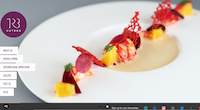 LUNCH AT THE WORLD’S BEST RESTAURANT: Beijing’s TRB Hutong has been named TripAdvisor’s Best Fine Dining Restaurant in the World. So what makes it so special? READ MORE
LUNCH AT THE WORLD’S BEST RESTAURANT: Beijing’s TRB Hutong has been named TripAdvisor’s Best Fine Dining Restaurant in the World. So what makes it so special? READ MORE
RECOMMENDED
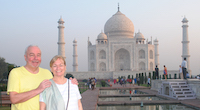 WELCOME TO OUR WORLD! Afaranwide’s home page – this is where you can find out about our latest posts and other highlights. READ MORE
WELCOME TO OUR WORLD! Afaranwide’s home page – this is where you can find out about our latest posts and other highlights. READ MORE
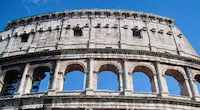 TOP 10 VIRTUAL ATTRACTIONS: Many of the world’s most popular tourists sites are closed because of the coronavirus crisis, but you can still visit them virtually while you’re self-isolating. READ MORE
TOP 10 VIRTUAL ATTRACTIONS: Many of the world’s most popular tourists sites are closed because of the coronavirus crisis, but you can still visit them virtually while you’re self-isolating. READ MORE
 SHIMLA, QUEEN OF THE HILLS: Government officials once retreated to Shimla in the foothills of the Himalayas to escape India’s blazing hot summers. Now tourists make the same journey. READ MORE
SHIMLA, QUEEN OF THE HILLS: Government officials once retreated to Shimla in the foothills of the Himalayas to escape India’s blazing hot summers. Now tourists make the same journey. READ MORE
 TEN THINGS WE LEARNED: Our up-to-the-minute guide to creating a website, one step at a time. The costs, the mistakes – it’s what we wish we’d known when we started blogging. READ MORE
TEN THINGS WE LEARNED: Our up-to-the-minute guide to creating a website, one step at a time. The costs, the mistakes – it’s what we wish we’d known when we started blogging. READ MORE
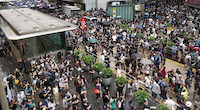 TROUBLED TIMES FOR EXPATS: Moving abroad can seem an idyllic prospect, but what happens when sudden upheavals or the inescapable realities of life intrude? READ MORE
TROUBLED TIMES FOR EXPATS: Moving abroad can seem an idyllic prospect, but what happens when sudden upheavals or the inescapable realities of life intrude? READ MORE
LET'S KEEP IN TOUCH!
Putting the YUM
in Museum

COLIN SIMPSON
Sichuan Cuisine Museum of Chengdu, China
THE Chinese province of Sichuan takes its distinctive style of cooking very seriously — so much so that it has set up a museum devoted to the subject.
The liberal use of red-hot chillis, mouth-numbing Sichuan pepper and fierce chilli bean paste gives many of the region’s dishes their fiery character.
Such intense flavors and the sight of meats, fish and vegetables lolling in red chilli-infused oil might be expected to put diners off, but in fact Sichuan cuisine is popular around the world. Chengdu has been given the rare accolade of being named a city of gastronomy by UNESCO.

Cook and food writer Fuchsia Dunlop, author of a number of books on Chinese cuisine, told me the stereotype that Sichuan cuisine is all about fiery heat is misleading.
“Actually its most striking characteristic is the diversity of flavours,” she said. “They say of Sichuanese food that ‘a hundred dishes have a hundred different flavours’ — and it’s this endless variety and dazzling complexity that is so beguiling.
“A good Sichuanese meal should include a balance of flavours, it’s not just about aggressive heat.”
A particular favourite is, of course, kung po chicken, a tasty stir-fry with peanuts, while other classics include pock-marked Mother Chen’s beancurd and man-and-wife meat slices. Sichuan is one of China’s so-called eight great cuisines – the others are Hunan, Cantonese, Fujian, Zhejiang, Anhui, Jiangsu, Shandong.
The exhibits at the Sichuan Cuisine Museum of Chengdu in Pixian county include plates of simulated food made to resemble some of these dishes. They are an odd and not entirely appetising sight alongside more conventional exhibits such as bowls, dishes, plates and spoons. The squeamish may not like the bowl of (real) cooked rabbit heads on the front desk.

The entire history of food and cooking in Sichuan is told, and some of the items are very old, including a large 2,000-year water container. One display suggests a reason for the spread of this style of cooking. During the Second World War many people moved to Sichuan and brought ingredients and cooking methods with them. These other styles were combined with Sichuan cuisine, and after the war the displaced people returned home – taking a taste for Sichuan food with them. Visitors can watch the real thing being prepared — and even cook it themselves — in a vast glass-walled kitchen. I donned a chef’s hat and rustled up a quick kung po chicken when I was there. It was a bit different from cooking a Chinese meal at home, though. I had used Dunlop’s classic Sichuan Cookery book for years before moving to China, and would characterise myself as a slow and steady cook, taking ages over the preparation and cooking. Here, the cooking of the small morsels of chicken and dried chillis in a spicy sauce, was over in a flash.
Outside the building stand rows of large containers with shiny red covers that are used to make chilli bean paste, often described as the soul of Sichuan cuisine. It can take as long as two years for the full flavour of this paste to emerge. Pixian county is famous for the quality of its chilli bean paste.
Families can rent plots in a nearby garden and harvest their own produce. Once they have planted their vegetables the museum gives them regular bulletins on how they are developing and advises them when they should come back to collect their crop.

Sichuan cuisine is widely available across Chengdu, often served to groups on a glass turntable on a round table.
The feast may start with a few cold dishes, which are soon joined by hot meat courses, vegetables, soup, rice and a fish lying in a piquant sauce. A plate of cooling melon might round the meal off.
A variation is provided by the Sichuan hotpot, where diners cook pieces of raw meat and vegetables in bubbling sauces at the table.
Some restaurants lay on another traditional expression of local culture, Sichuan opera. The highlight usually involves the technique known as face-changing, where a performer switches his mask several times, looking fierce one moment and smiling the next.
The colorful masks change seemingly by magic, and a guest may be shaking the hand of the entertainer when the transformation happens without having a clue how the trick is achieved.

Verdict: Quirky museum that will appeal to fans of Sichuan food.
Updated June 2020
MORE INFO
 FURTHER INFORMATION about the museum can be found on the site of the China Discovery travel agency, which organises tours. READ MORE
FURTHER INFORMATION about the museum can be found on the site of the China Discovery travel agency, which organises tours. READ MORE
RELATED
 BUG, SCORPION STREET SNACKS: Starfish, larvae, bugs and seahorses were among the specialities on offer at Beijing’s Donghuamen Night Market. We recall this unusual market… READ MORE
BUG, SCORPION STREET SNACKS: Starfish, larvae, bugs and seahorses were among the specialities on offer at Beijing’s Donghuamen Night Market. We recall this unusual market… READ MORE
 LUNCH AT THE WORLD’S BEST RESTAURANT: Beijing’s TRB Hutong has been named TripAdvisor’s Best Fine Dining Restaurant in the World. So what makes it so special? READ MORE
LUNCH AT THE WORLD’S BEST RESTAURANT: Beijing’s TRB Hutong has been named TripAdvisor’s Best Fine Dining Restaurant in the World. So what makes it so special? READ MORE
RECOMMENDED
 WELCOME TO OUR WORLD! Afaranwide’s home page – this is where you can find out about our latest posts and other highlights. READ MORE
WELCOME TO OUR WORLD! Afaranwide’s home page – this is where you can find out about our latest posts and other highlights. READ MORE
 TOP 10 VIRTUAL ATTRACTIONS: Many of the world’s most popular tourists sites are closed because of the coronavirus crisis, but you can still visit them virtually while you’re self-isolating. READ MORE
TOP 10 VIRTUAL ATTRACTIONS: Many of the world’s most popular tourists sites are closed because of the coronavirus crisis, but you can still visit them virtually while you’re self-isolating. READ MORE
 SHIMLA, QUEEN OF THE HILLS: Government officials once retreated to Shimla in the foothills of the Himalayas to escape India’s blazing hot summers. Now tourists make the same journey. READ MORE
SHIMLA, QUEEN OF THE HILLS: Government officials once retreated to Shimla in the foothills of the Himalayas to escape India’s blazing hot summers. Now tourists make the same journey. READ MORE
 TEN THINGS WE LEARNED: Our up-to-the-minute guide to creating a website, one step at a time. The costs, the mistakes – it’s what we wish we’d known when we started blogging. READ MORE
TEN THINGS WE LEARNED: Our up-to-the-minute guide to creating a website, one step at a time. The costs, the mistakes – it’s what we wish we’d known when we started blogging. READ MORE
 TROUBLED TIMES FOR EXPATS: Moving abroad can seem an idyllic prospect, but what happens when sudden upheavals or the inescapable realities of life intrude? READ MORE
TROUBLED TIMES FOR EXPATS: Moving abroad can seem an idyllic prospect, but what happens when sudden upheavals or the inescapable realities of life intrude? READ MORE
LET'S KEEP IN TOUCH!

Putting the YUM
in Museum

COLIN SIMPSON
Sichuan Cuisine Museum of Chengdu, China
THE Chinese province of Sichuan takes its distinctive style of cooking very seriously — so much so that it has set up a museum devoted to the subject.
The liberal use of red-hot chillis, mouth-numbing Sichuan pepper and fierce chilli bean paste gives many of the region’s dishes their fiery character.
Such intense flavors and the sight of meats, fish and vegetables lolling in red chilli-infused oil might be expected to put diners off, but in fact Sichuan cuisine is popular around the world. Chengdu has been given the rare accolade of being named a city of gastronomy by UNESCO.

Cook and food writer Fuchsia Dunlop, author of a number of books on Chinese cuisine, told me the stereotype that Sichuan cuisine is all about fiery heat is misleading.
“Actually its most striking characteristic is the diversity of flavours,” she said. “They say of Sichuanese food that ‘a hundred dishes have a hundred different flavours’ — and it’s this endless variety and dazzling complexity that is so beguiling.
“A good Sichuanese meal should include a balance of flavours, it’s not just about aggressive heat.”
A particular favourite is, of course, kung po chicken, a tasty stir-fry with peanuts, while other classics include pock-marked Mother Chen’s beancurd and man-and-wife meat slices. Sichuan is one of China’s so-called eight great cuisines – the others are Hunan, Cantonese, Fujian, Zhejiang, Anhui, Jiangsu, Shandong.


The exhibits at the Sichuan Cuisine Museum of Chengdu in Pixian county include plates of simulated food made to resemble some of these dishes. They are an odd and not entirely appetising sight alongside more conventional exhibits such as bowls, dishes, plates and spoons. The squeamish may not like the bowl of (real) cooked rabbit heads on the front desk.

The entire history of food and cooking in Sichuan is told, and some of the items are very old, including a large 2,000-year water container. One display suggests a reason for the spread of this style of cooking. During the Second World War many people moved to Sichuan and brought ingredients and cooking methods with them. These other styles were combined with Sichuan cuisine, and after the war the displaced people returned home – taking a taste for Sichuan food with them. Visitors can watch the real thing being prepared — and even cook it themselves — in a vast glass-walled kitchen. I donned a chef’s hat and rustled up a quick kung po chicken when I was there. It was a bit different from cooking a Chinese meal at home, though. I had used Dunlop’s classic Sichuan Cookery book for years before moving to China, and would characterise myself as a slow and steady cook, taking ages over the preparation and cooking. Here, the cooking of the small morsels of chicken and dried chillis in a spicy sauce, was over in a flash.

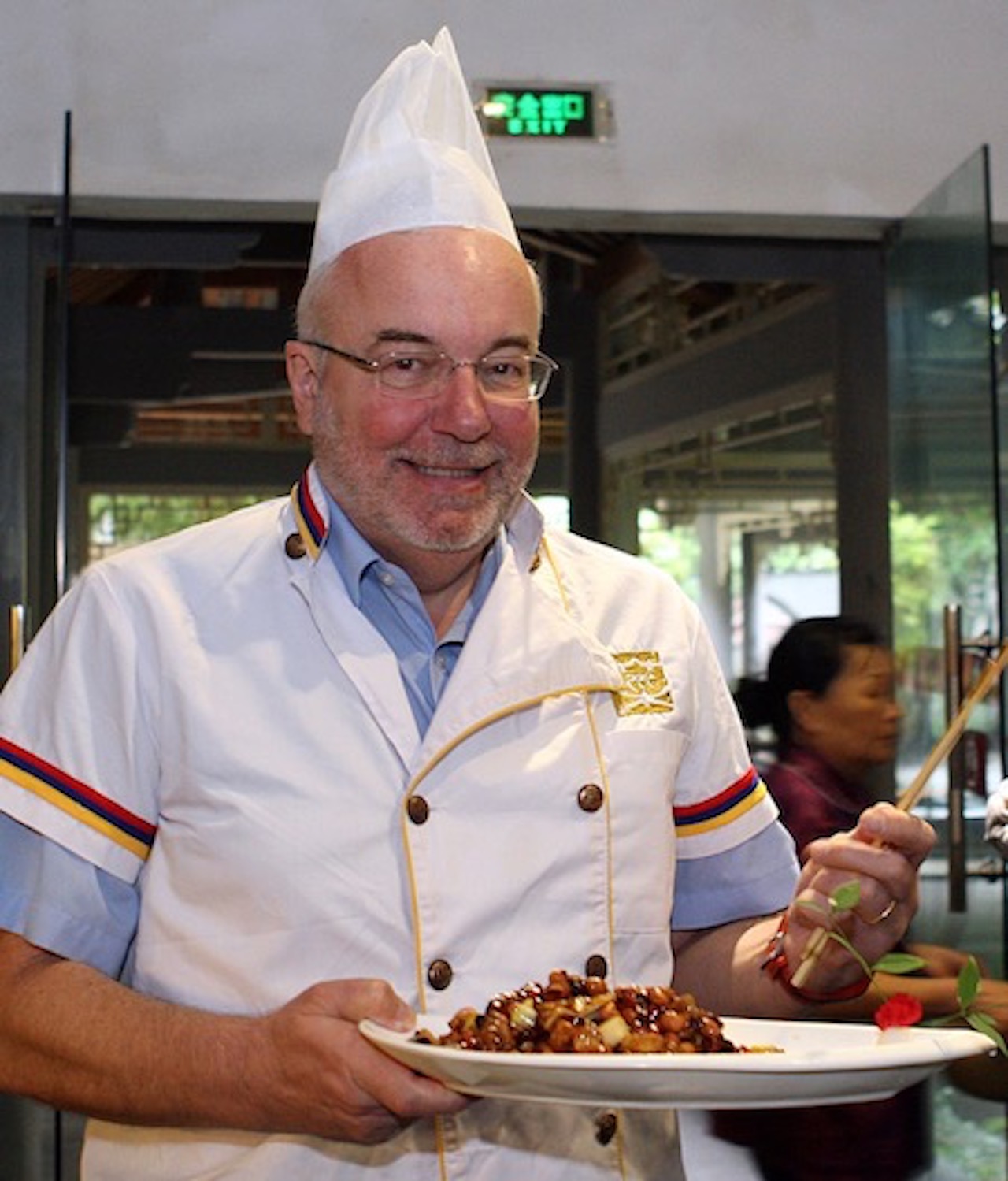
Outside the building stand rows of large containers with shiny red covers that are used to make chilli bean paste, often described as the soul of Sichuan cuisine. It can take as long as two years for the full flavour of this paste to emerge. Pixian county is famous for the quality of its chilli bean paste.
Families can rent plots in a nearby garden and harvest their own produce. Once they have planted their vegetables the museum gives them regular bulletins on how they are developing and advises them when they should come back to collect their crop.

Sichuan cuisine is widely available across Chengdu, often served to groups on a glass turntable on a round table.
The feast may start with a few cold dishes, which are soon joined by hot meat courses, vegetables, soup, rice and a fish lying in a piquant sauce. A plate of cooling melon might round the meal off.
A variation is provided by the Sichuan hotpot, where diners cook pieces of raw meat and vegetables in bubbling sauces at the table.
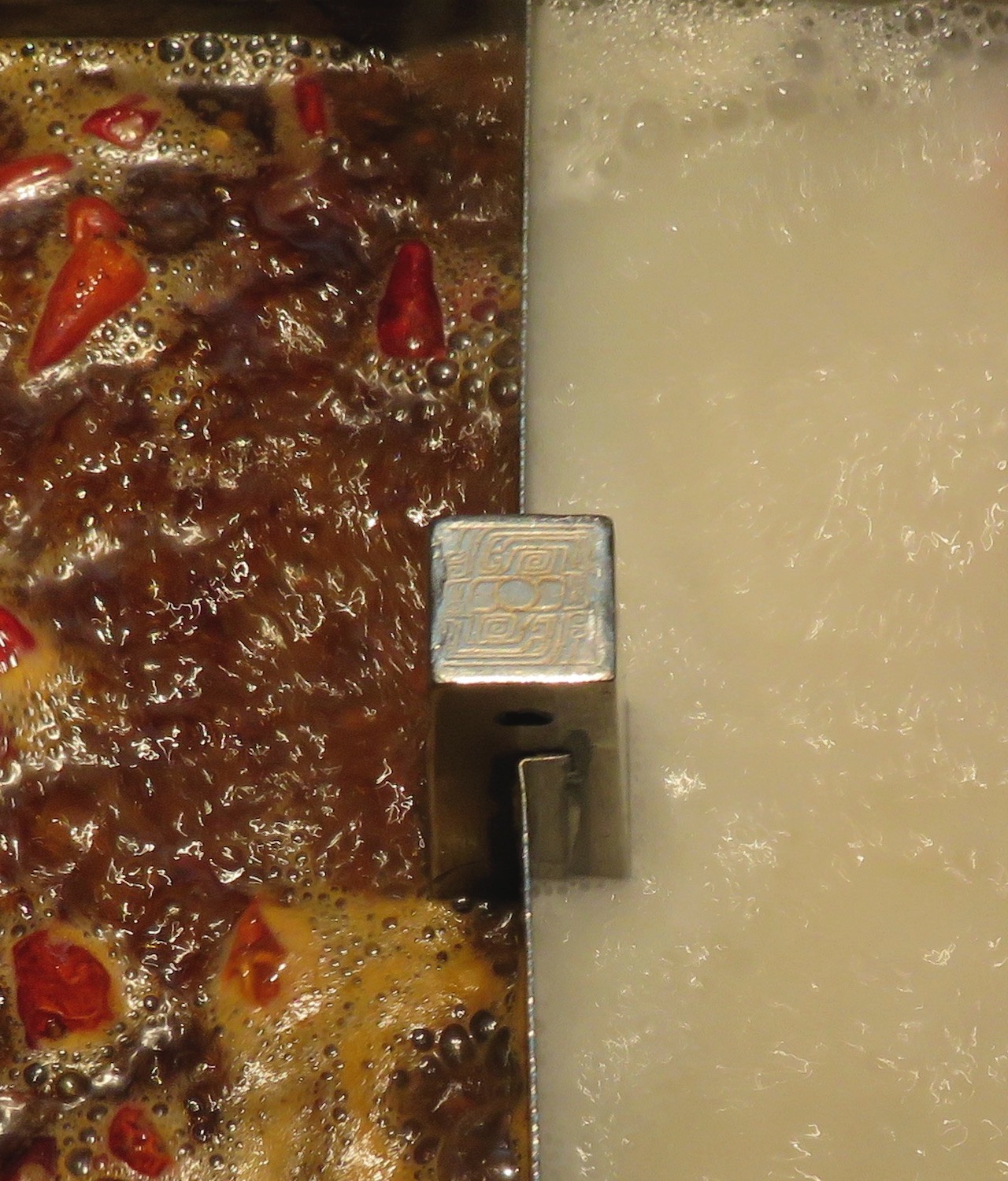

Some restaurants lay on another traditional expression of local culture, Sichuan opera. The highlight usually involves the technique known as face-changing, where a performer switches his mask several times, looking fierce one moment and smiling the next.
The colorful masks change seemingly by magic, and a guest may be shaking the hand of the entertainer when the transformation happens without having a clue how the trick is achieved.

Verdict: Quirky museum that will appeal to fans of Sichuan food.
Updated June 2020
MORE INFO
 FURTHER INFORMATION about the museum can be found on the site of the China Discovery travel agency, which organises tours. READ MORE
FURTHER INFORMATION about the museum can be found on the site of the China Discovery travel agency, which organises tours. READ MORE
RELATED
 BUG, SCORPION STREET SNACKS: Starfish, larvae, bugs and seahorses were among the specialities on offer at Beijing’s Donghuamen Night Market. We recall this unusual market… READ MORE
BUG, SCORPION STREET SNACKS: Starfish, larvae, bugs and seahorses were among the specialities on offer at Beijing’s Donghuamen Night Market. We recall this unusual market… READ MORE
 LUNCH AT THE WORLD’S BEST RESTAURANT: Beijing’s TRB Hutong has been named TripAdvisor’s Best Fine Dining Restaurant in the World. So what makes it so special? READ MORE
LUNCH AT THE WORLD’S BEST RESTAURANT: Beijing’s TRB Hutong has been named TripAdvisor’s Best Fine Dining Restaurant in the World. So what makes it so special? READ MORE
RECOMMENDED
 WELCOME TO OUR WORLD! Afaranwide’s home page – this is where you can find out about our latest posts and other highlights. READ MORE
WELCOME TO OUR WORLD! Afaranwide’s home page – this is where you can find out about our latest posts and other highlights. READ MORE
 TOP 10 VIRTUAL ATTRACTIONS: Many of the world’s most popular tourists sites are closed because of the coronavirus crisis, but you can still visit them virtually while you’re self-isolating. READ MORE
TOP 10 VIRTUAL ATTRACTIONS: Many of the world’s most popular tourists sites are closed because of the coronavirus crisis, but you can still visit them virtually while you’re self-isolating. READ MORE
 SHIMLA, QUEEN OF THE HILLS: Government officials once retreated to Shimla in the foothills of the Himalayas to escape India’s blazing hot summers. Now tourists make the same journey. READ MORE
SHIMLA, QUEEN OF THE HILLS: Government officials once retreated to Shimla in the foothills of the Himalayas to escape India’s blazing hot summers. Now tourists make the same journey. READ MORE
 TEN THINGS WE LEARNED: Our up-to-the-minute guide to creating a website, one step at a time. The costs, the mistakes – it’s what we wish we’d known when we started blogging. READ MORE
TEN THINGS WE LEARNED: Our up-to-the-minute guide to creating a website, one step at a time. The costs, the mistakes – it’s what we wish we’d known when we started blogging. READ MORE
 TROUBLED TIMES FOR EXPATS: Moving abroad can seem an idyllic prospect, but what happens when sudden upheavals or the inescapable realities of life intrude? READ MORE
TROUBLED TIMES FOR EXPATS: Moving abroad can seem an idyllic prospect, but what happens when sudden upheavals or the inescapable realities of life intrude? READ MORE